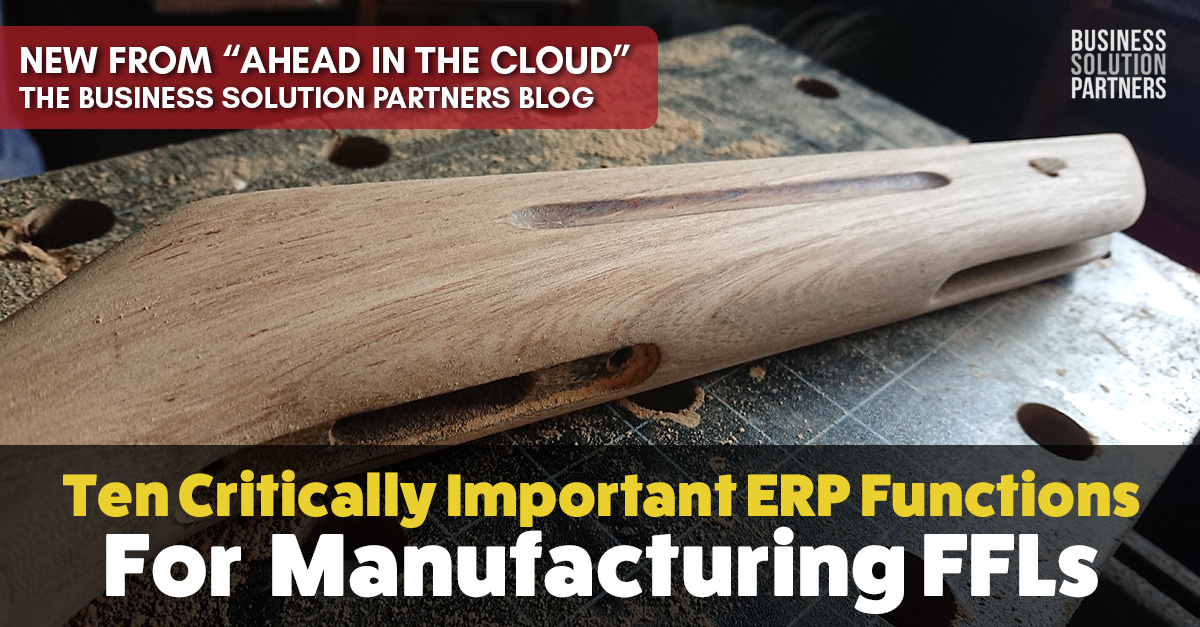What Role Is ERP Distribution Software Playing In The Changing Manufacturing Climate?
With the rise of labor costs and globalization of the economy, many fear the decline and fall of American manufacturing. Symptomatic of these...
2 min read
FullQuota Editor : Dec 3, 2013 12:00:36 AM
Manufacturers and distributors have been investing in enterprise resource planning (ERP) software to run their businesses for decades. In today’s changing global business climate, it’s very important for these companies to have ERP systems that adapt and run effectively.
“Many of the assets that made an ERP system appealing in the past have changed completely, so much that even software a handful of years old can be woefully inadequate to current needs,” says Dominic Telaro, director of industry solutions for a provider of enterprise business solutions, in an article on Manufacturing.net.
So what trends are most prominent in the world of supply chain ERP? According to the article, collaboration and automated workflows are vital for manufacturers and distributors to stay efficient and competitive in today’s marketplace.
Manufacturers and distributors face many risks to their supply chain both from natural disasters and man-made interruptions. “Being able to use your existing system to connect all these pieces of the puzzle with automation, such as workflow or alerts portals, will simplify and expedite a solution,” Telaro says.
Through the use of automated workflows, modern ERP systems can receive data and make decisions on the fly to ensure smooth operations continue. This automation also enables more efficient collaboration within the company and with vendors and partners. Allowing your employees and partners to access the same data and responding to automated alerts when circumstances are altered means a seamless and protected supply chain.
“Integrating [these systems] and collaborating will allow for timely and accurate information sharing that will create faster turnaround for solutions and avoid mistakes due to delays and incorrect information transfer [human error],” Telaro explains.
In order to take advantage of the many benefits of automated workflows and systems integration, manufacturers and distributors need to embrace some changes in their organizations. Telaro mentions business process reengineering (BPR) as a necessity.
“By BPR, I do not mean reengineering, but rather redefinition,” he says. “You cannot necessarily change your manufacturing equipment or distribution line but you can redefine your methods. This is possible due to all the new functionality that is available in new software solutions.”
Maintaining the same old business processes can often mean adhering to processes that were highly customized to accommodate the lack of functionality in legacy software. This can disallow properly designed automated workflows as well as prevent proper integration between systems.
Change can make business decision-makers resistant to the adoption of new software. This, according to the article, is a mistake that will prevent innovation and even cut profits and performance.
“Having a constantly updating, single source of information will help companies and partners avoid misunderstandings or business decisions based on stale date,” the article states.
Using a software partner that can come into your business, learn how it works and assist your implementation team in making wise decisions can ease this painful process and make it efficient for your business and your bottom line. Manufacturers and distributors that use automation to effectively collaborate with their supply chain both inside and outside the factory walls will likely see long-term success and stability.
Source: Manufacturing.net, October 2013
With the rise of labor costs and globalization of the economy, many fear the decline and fall of American manufacturing. Symptomatic of these...
Business technology is advancing rapidly in several areas. According to an article on the Manufacturing Business Technology website, three important...

2020 was a record setting year for the firearm industry. Firearm manufacturing FFLs are notably on the rise, likely as a result of boutique firearm...